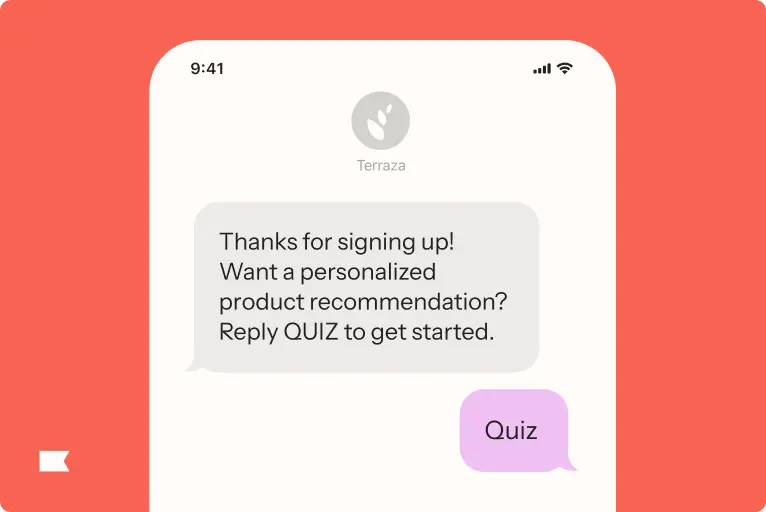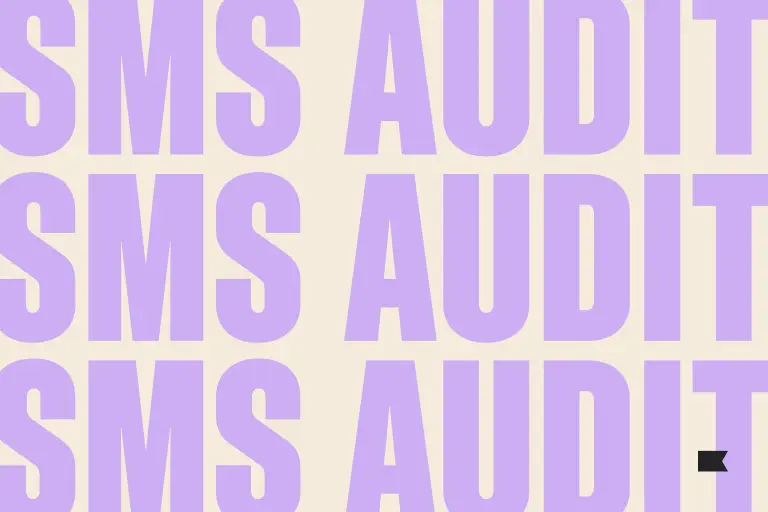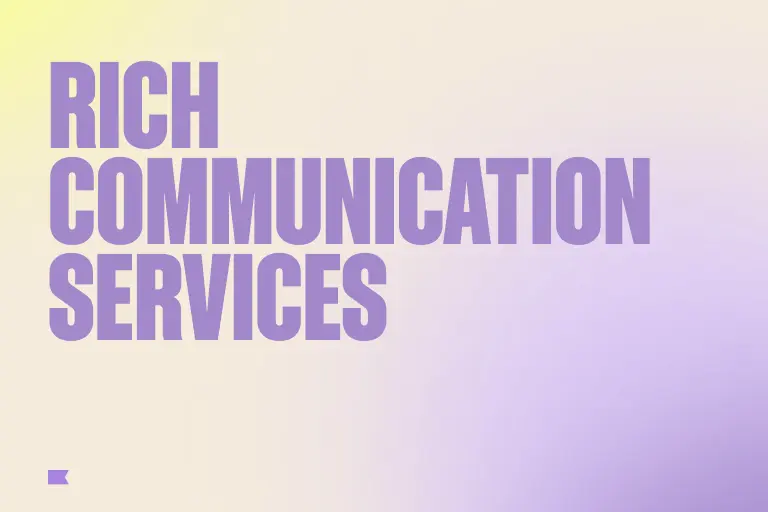SMS marketing best practices: 13 expert-tested tips for boosting engagement now
Here’s a secret: SMS marketing isn’t a quick win.
That idea is one of the more prevalent SMS marketing myths.
And here’s the first SMS marketing hot take of more to come: Marketers are getting a lot wrong with SMS today.
Ready to get it right? Here are 13 overarching SMS marketing best practices from 13 experts for how to text your subscribers without annoying them—and, eventually, turn them into loyal customers for life.
1. Ask—and confirm—permission
If you don’t get someone’s explicit consent to SMS marketing, you could end up paying thousands of dollars in fines. Simply agreeing to email marketing, general marketing, or even one-time transactional SMS does not qualify as marketing consent.
For an extra layer of protection from strict SMS compliance laws, use double opt-in. In this practice, after a subscriber signs up for SMS marketing, they must also confirm their sign-up by replying something like “YES” when they receive the first text from your brand.
A lot of marketers have concerns about slow list growth because they’re making people take that extra step to reply YES, but ultimately it’s better to grow your list with high-quality leads and people you know will respond.
“A lot of marketers have concerns about slow list growth because they’re making people take that extra step to reply YES, but ultimately it’s better to grow your list with high-quality leads and people you know will respond,” explains Melissa Matusky, manager and implementation consultant at Klaviyo.
“If you know somebody isn’t willing to respond to a text message from you with a YES,” Matusky adds, “they’re probably not very invested in the channel.”
2. Actively build your SMS list
Like your email list, your SMS list requires active attention to grow. Here are a few compliant ways to make it easy and worthwhile for shoppers to opt in to your SMS marketing:
“The pop-up is such a major portion of your list growth that you really have to nail that piece of it,” says Jacob Sappington, head of email at ecommerce growth marketing agency Homestead Studio, who recommends using multi-step forms that collect email addresses first, then ask for SMS on the second screen.
Your email subscribers “are people who are already in your CRM, who are already in your funnel,” Sappington points out. “They’re willing to be a little bit deeper ingrained in your business because you have something to offer that they like.”
If your SMS program has been around for a while, sign-up forms and email campaigns might not cut it for sustainable list growth. Try giving people the option to sign up for SMS marketing at check-out and in store, adding sign-up QR codes to your packaging, and allowing people to sign up via Instagram stories.
3. Make it easy to opt out
Even if you’re doing everything right, some of your SMS subscribers may eventually decide they no longer want to receive texts from your brand. It’s therefore important to give your SMS subscribers an easy way to opt out—in every text you send.
It may seem counterintuitive, but you don’t want to waste money sending texts to someone who doesn’t want to hear from you. And if you text someone who wants to opt out but can’t, they may report you.
Matusky says this step is as simple as including either an unsubscribe link or a keyword response opt-out option, such as “STOP.” (Marketing platforms like Klaviyo, which have compliance features built in, automatically handle this for users.)
4. Differentiate email from SMS
You shouldn’t be sending a shorter version of your email to customers via text. And sending those messages at the exact same time? You can do better.
If someone has their notifications turned on and they get the same message in two channels at the same time, they’re going to unsubscribe from one—and it’s probably going to be SMS.
“If someone has their notifications turned on and they get the same message in two channels at the same time, they’re going to unsubscribe from one—and it’s probably going to be SMS,” says Jason Anderson, COO of global customer journey agency Andzen.
Here are a few ways to ensure you’re differentiating email and SMS in your digital marketing strategy, according to the SMS experts:
Think flash sales, inventory alerts (coming soon to Klaviyo), and transactional notifications. “What’s an instance where a subscriber would be disappointed if they didn’t receive a message? Think about it through that lens,” Anderson points out.
“Think about how you text your friends,” advises Casey Armstrong, CMO of fulfillment company ShipBob. “Then do that.”
“Keeping SMS and email living within one platform is just as important as doing SMS at all,” says Ben Zettler, founder of digital marketing and ecommerce agency Zettler Digital. “This is how you store all your data within a single user profile, so that you can then use it to leverage for the purposes of segmentation.”
5. SMS copy: keep it short and sweet
According to Klaviyo data, shorter messages tend to drive higher click rates.
That makes sense—because character count is so limited, SMS message copy needs to be as punchy and direct as possible. With every text message you send, ask:
- Are we addressing the subscriber the same way we would address a friend?
- Why should the subscriber care?
- What action do we want them to take if they do?
Jess Schanzer, lead product marketing manager at Klaviyo, recommends “paring down your texts to the tl;dr. It’s really about shortening your messaging to be really concise and to the point.”
That said, don’t let “short and sweet” translate to “boring.” “The brands that do SMS marketing well are able to infuse their personality into it,” says Rob Hand, lead product marketing manager at Klaviyo.
6. Choose wisely between SMS and MMS
Sappington says Homestead is typically an “SMS-first agency” for two key reasons: First, depending on your SMS marketing platform, MMS can be quite a bit more expensive. And second, the numbers show that MMS may not be worth the extra expense.
“We’ve tested it time and time again, and we see that SMS and MMS have about the same conversion rate,” Sappington explains. “Sometimes SMS is even favored.”
Times when it makes sense to go with an MMS would be if it’s a very visually aesthetic product, and that is the main reason why someone would buy.
Of course, every brand is different, and testing is the only way to know for sure. Blair Peterson, VP of strategy at ethical jewelry brand Dana Rebecca Designs, for example, has found that “if you have a more emotional text, or if it’s more educational, you don’t need an image because it’s more about where you’re sending them to find out more.”
By contrast, “when it’s more product-based, or if it’s our top picks, that’s where you need the image to grab attention,” Peterson says.
“Times when it makes sense to go with an MMS would be if it’s a very visually aesthetic product, and that is the main reason why someone would buy,” Sappington agrees. That means “visually beautiful products, or products you’re texting about as part of the hype-building process, to show someone using it in action.”
7. Use a single CTA—and make sure the destination makes sense
Using a single CTA allows you to keep your SMS short—and shorter texts, remember, tend to earn higher click rates. It also makes it easier for the subscriber to take action because they won’t be overwhelmed by options.
Equally important: The CTA link should take subscribers to a logical destination.
“It’s super important to make the link destination feel curated to whatever the message is,” Peterson says. For example, “if it’s a message about earrings, we’ll send them to the best-selling earrings page, rather than just the best-selling jewelry page.”
It’s super important to make the link destination feel curated to whatever the message is.
“If you’re talking about a specific product, push them to that product page or to a landing page specific to that product,” Sappington agrees. “If you’re talking about a couple of items, drop them on a new arrivals or best-sellers collection.”
The only time Sappington recommends including a link to your homepage in a text message is if you’re sending a text that doesn’t include an immediate CTA—for example, a reminder that a new product is dropping in 2 days and SMS subscribers should keep an eye out for early access.
“In that case, there’s nothing the user can do right now. But as long as I’m being concise with my messages, it doesn’t cost me any extra to drop a link on there,” Sappington points out.
8. Personalize with smart segmentation
Brandon Amoroso, founder and CEO of ecommerce marketing agency Electriq, calls personalization “by far the most important component of a successful SMS strategy.”
“Personalization is important with email marketing too, but with email, you get away with a lot more because it’s not as personal or in-your-face as text messages,” Amoroso explains. “The feedback loop is much tighter with SMS—if you don’t personalize your text messages, you’ll quickly see high unsubscribe rates and complaints.”
If you don’t personalize your text messages, you’ll quickly see high unsubscribe rates and complaints.
And true SMS personalization goes way beyond including someone’s first name in a text. It requires incorporating more precise customer segmentation into your SMS marketing strategy—something Elliot Scott, founder and CEO of London-based retention agency ElliotDigital, says is “hugely neglected” in the industry right now.
“Just like with email, brands should take advantage of segmentation to create customer cohorts based on interests or behaviors,” says Samantha Santana, digital marketing strategist at IM Digital. “Segmenting SMS lists allows brands to craft messages that are tailored to each segment, making them more likely to be successful.”
Amoroso encourages marketers to consider the following criteria to create more defined SMS segments and, ultimately, better personalize the content of each send:
- Engagement with SMS and/or email
- Products ordered
- Last order date
- Demographic data
- Subscriber status
- Quiz or survey responses
9. Make SMS subscribers feel special
Your SMS subscribers are trusting you with something valuable—their phone numbers. Make that worth their while.
“When you create a VIP experience for people who share their phone numbers, they feel like they’re getting something special,” says Mason Wheeler, former customer education specialist at Klaviyo. “That makes them want to stick around for the long run.”
Wheeler suggests thinking creatively about how to “create almost a subculture within your brand for your most loyal fans—the people who buy every product you send out.” That might mean treating your SMS subscribers to things like:
- Flash sale announcements
- Sneak peeks
- Early access to promotions or product drops
- Exclusive offers and content
- Last-chance reminders
10. Connect on a deeper level
One pattern SMS experts are noticing: Too many marketers are using SMS solely as a way to communicate sales.
“There’s one company I always get messages from, and everything is sale, sale, sale, sale. It’s training me to never buy anything unless they send me a text for a sale,” says Phil Sblendorio, CRO at email and SMS agency AMB Interactive. “This is where you need to get creative when nurturing through SMS while driving revenue in a less obvious way.”
You need to get creative when nurturing through SMS while driving revenue in a less obvious way.
Scott says that’s about finding “those odd little angles people don’t expect when they open a text from a business. You want them to think, ‘Oh, cool—they’re not trying to sell me something.’ Brands should be doing that more. Even the big brands.”
The team at Dana Rebecca Designs, for example, “might send an SMS that says something like, ‘We get it—it’s Monday and it’s January. Shop around on the site, brighten your day a little,’” Peterson says. “It’s just trying to be real, and knowing that might not be a revenue play—it’s an engagement play.”
“We want subscribers to think, ‘Oh, that’s funny,’ or ‘I can relate to that,’ so the next time they do want to make a purchase, they think of us,” Peterson adds.
Rather than inundating your subscribers with the same promotions repeatedly, mix it up by providing value in a different way, such as:
- Providing tips and tricks, or other relevant content
- Sharing fun memes, pictures, or GIFs
- Sending customer testimonials or product reviews
- Hosting a giveaway, contest, or event
- Encouraging subscribers to engage with your brand on social media
11. Talk back with two-way texting
“A lot of marketers look at SMS as a transactional form of communication. But the reality is that people can reply to texts in a much more seamless way than they would an email,” Amoroso says. “Most people don’t reply to marketing emails that they get, but people will reply to texts that they get.”
At a time when many marketers are still sticking to one-off SMS campaigns, here are a few ways to use conversational SMS to improve the customer experience:
Integrate help desk apps like Gorgias and Zendesk with your SMS marketing platform to manage all customer communications in one place and power highly targeted campaigns, such as excluding customers with open support tickets from promotional campaigns.
This strategy works particularly well for repeat customers, Zettler says: “Reach out to your loyal customers, such as people who have bought from you 5x, with a text message saying, ‘Thanks for completing your 5th purchase. We would love to know what’s your favorite thing and what’s your least favorite thing about what we’re doing.’”
Learn more about SMS marketing integrations.
12. Find the right texting cadence
Most marketers understand the dangers of texting too much. Because sending messages to someone’s mobile device feels more intimate, “it also has the power to annoy people more so than email,” Schanzer cautions.
That said, not texting enough is another prime way to break trust with your SMS subscribers.
“If you build a list and you don’t send a text in 6 months, then there are all these subscribers you’ve accumulated who haven’t heard from you—and they may not even remember that they signed up,” Zettler explains.
Consistency, therefore, is key. On a monthly basis, Klaviyo recommends:
- Sending 2 major SMS announcements for promotions, new releases, or holidays to your full list
- Sending 2 follow-up SMS campaigns to the major announcements, either for early access or last call before the sale ends, excluding profiles that have already converted
- Sending 3 targeted SMS campaigns to segmented audiences, such as:
- VIPs
- Category or product purchasers or viewers
- New subscribers who haven’t made a purchase yet
- Implementing an SMS welcome series, and adding SMS to at least 3 of your other flows, such as:
- Abandoned cart
- Abandoned check-out
- Browse abandonment
- Transactional notifications
- Birthday or anniversary
- Review request
Learn more about best practices for SMS campaigns, SMS flows, and incorporating both email and SMS into your marketing efforts.
13. Track your performance—and assume nothing
Instead of open rate—a notorious vanity metric in SMS marketing—experts recommend focusing on the following SMS metrics to understand whether your efforts are paying off:
- Subscribe rate/list growth rate
- Click rate
- Unsubscribe rate
- Revenue per recipient
- SMS ROI (“incremental gross profit after campaign credit costs and contribution margins,” Scott explains)
- Flow vs. campaign revenue
Once you have a handle on which KPIs are most important to your brand, “you need to test and iterate in real time to see what actually works and gets people excited,” says Hand, who notes it’s easy to A/B test a variety of factors in Klaviyo:
- Personalization vs. non-personalization
- Incentive vs. no incentive
- MMS vs. SMS
- Emojis vs. no emojis
- Copy length, voice, and tone
- Time of day and day of week
- Different segments
- Sequence of flow paths (i.e., email vs. SMS first)
“A lot of SMS marketing is just trial and error,” Peterson says. “Even when you think you know this is going to be the thing that’s going to move the needle in your SMS program, you have to keep evolving and trying new things.”




